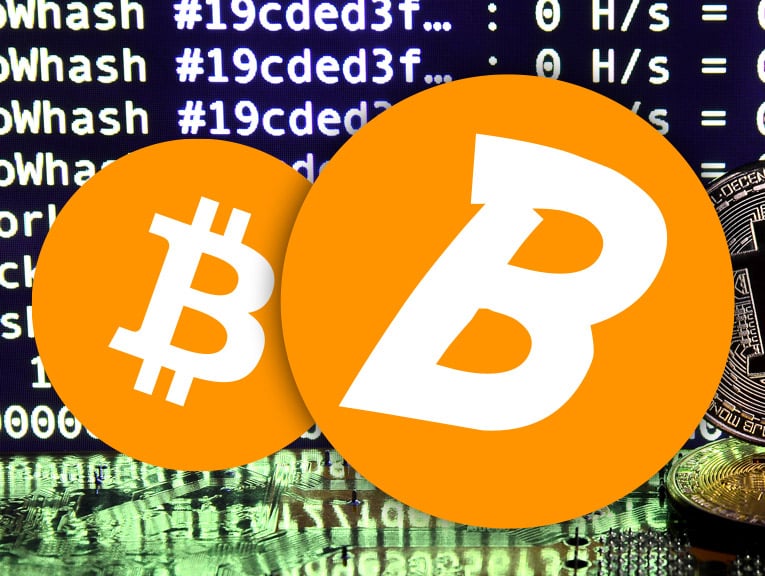
Table of Contents
ToggleA few days ago, while I was trying to explain in simple terms to a group of friends what bitcoin was and for what purpose it was invented, my friend Javier, after telling him that BTC is considered the digital gold of cryptocurrencies, asked me if ‘is it possible to counterfeit bitcoin‘.
I must say that I was stunned since, despite the last few years spent studying and documenting myself on the subject, I had never focused on such a curious and important issue.
That’s why today I want to dedicate an article with the answer to my friend Javier.
Is it possible to counterfeit bitcoin like gold and fiat money?
Wuhan, the Chinese city that has become famous for being the center of the spread of the coronavirus, was once again the epicenter of another disaster: over 80 tons of gold pledged as collateral for a loan are now being investigated for counterfeiting.
If confirmed, the fraud would amount to $ 4 billion. This shows that gold, which is a scarce good, can be counterfeited.
So we ask if what is now considered the digital gold par excellence, the bitcoin, can be counterfeited.
Now you would probably ask me why I should think that a cryptocurrency can be counterfeit.
We assume that we are talking about a coin and coins can be counterfeit. However, of course, we are not talking about physical notes but virtual currencies.
And, if you think about it, in a digital environment everything can be instantly copied or cracked. The same happens with pirated copies of films, music, books, etc.
So, if a physical currency can be counterfeited and digital files can be copied, cryptocurrencies are also susceptible to counterfeiting.
Beyond the premise, and although we have remembered that even in the virtual world everything can be copied easily, the same cannot be done with a bitcoin. In a nutshell, there can be no “fake bitcoins”.
How Blockchain Technology works
To explain why there can be no fake bitcoins, let’s first start with a simple and quick explanation of what the Blockchain is.
To record any transaction, bitcoin and other cryptocurrencies are based on Blockchain technology, a kind of ledger or electronic ledger that has the following characteristics: it is public, global, unique, permanent and distributed.
The transactions are in fact grouped into blocks and the blockchain contains the list of blocks that have already been validated. Each block is linked to its predecessor in a chronological and sequential way up to the first block, called the genesis block.
So the Blockchain is a sort of huge database that contains the entire record of transactions in encrypted form.
The blockchain, as mentioned, is shared, because it is duplicated on all the computers belonging to the network, called nodes, and running the program for the cryptocurrency in question.
The blockchain database is public, because anyone can consult a cryptocurrency transaction, its amount and the addresses used in this transaction at any time.
Thousands of miners or nodes (computers) belonging to the Bitcoin network process transactions. These miners also verify the work of other miners who have previously processed other transactions. When transactions are validated collectively and coordinated by miners, the level of reliability is extremely high and we speak of “decentralized trust” because trust is distributed among all the nodes of the network.
In this way, for example, it can be verified that the previous entries in the chain do not contain this transaction, which would indicate a duplication or a fraudulent operation.
For example, if an agent tries to spend or use counterfeit bitcoins or those that do not belong to him, these checks within the blockchain would detect him.
Counterfeiting a bitcoin: the importance of decentralization
Bitcoin, like other cryptocurrencies, offers a very high level of security thanks to its ‘distributed consensus‘ algorithm, within which multiple copies of a register are constantly distributed and evaluated to avoid fraud and errors.
For example, if someone wants to destroy a centralized database, such as a corporate database, they only need to attack a limited number of servers.
Conversely, if someone wanted to completely destroy the blockchain, they would have to be able to access all the computers on the network distributed around the planet and delete their local copy, which is impossible.
The blockchain is therefore the way Bitcoin can be decentralized unlike a traditional bank.
As mentioned above, the Bitcoin network is built by those who are connected to it:
- the nodes or miners who work with their powerful equipment to verify and approve operations;
- users using full node portfolios on their computers;
- users who have simple wallets on mobile phones or digital platforms.
When an operation occurs to transfer bitcoins from user A to user B, the data is sent to the blockchain. In the archives of the network it will appear that user A, in a certain digital wallet, owns a certain number of bitcoins.
Each participant in the network becomes a node and there must always be a consensus so that each operation is recognized as unique.
The blockchain is also kept in constant synchronization, because it is updated with each operation. This means that the information is always the same for everyone, so it is impossible to fake a bitcoin, because the entire network should be deceived and the data encrypted in the “blockchain” should be altered.
A hacker would have to control 51% of the entire network to falsify or fraudulently manipulate a bitcoin, but for this it requires investing huge amounts of money, to control more than half of the power.
Furthermore, if someone were to control 51% of the network, they would immediately know and, as a consequence, all Bitcoin users would leave the network, because it would stop being decentralized and bitcoin would no longer have the value it currently has.
We can therefore conclude that:
- Unlike fiat money, it is not possible to counterfeit bitcoin due to the characteristics of its protocol, which prevent a person from carrying out an attack known as a double spend or 51% attack, a fraudulent operation in which a user tries to generate two or multiple transactions from the same operation. And on the off chance that a network attack occurs, it would be known to all nodes and end up becoming a fraud, making the network vulnerable.
- A possible counterfeiting of a Bitcoin would occur if a counterfeiter controlled most of the CPU power of the entire Bitcoin network, which means that a user would have the power of millions of computers, which is practically impossible.
- In cryptocurrency technology, therefore, security lies in cryptography and in the control of the private key, which allows you to sign the operations that are carried out in the interconnected network. In the case of legal tender, to avoid counterfeiting, the monetary authority must constantly improve the paper technology, printing techniques or security markings.
So, when answering my friend Javier’s question, decentralization, transaction verification and consensus are all mechanisms that allow each bitcoin transaction registered on the blockchain to be unique and unrepeatable, to the point that bitcoin counterfeiting is impossible.




